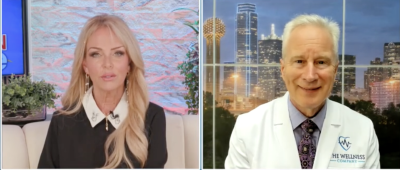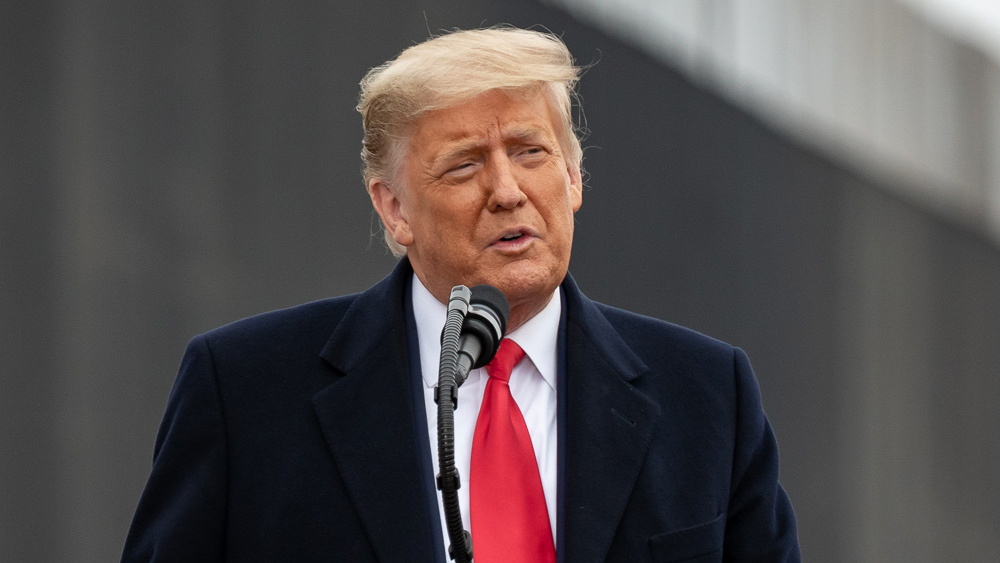US Money Supply – The Pandemic Moonshot
by Pater Tenebrarum, Acting Man:

Printing Until the Cows Come Home…
It started out with Jay Powell planting a happy little money tree in 2019 to keep the repo market from suffering a terminal seizure. This essentially led to a restoration of the status quo ante “QT” (the mythical beast known as “quantitative tightening” that was briefly glimpsed in 2018/19). Thus the roach motel theory of QE was confirmed: once a central bank resorts to QE, a return to “standard monetary policy” becomes impossible. You can check in, but you can never leave.
 Phase 1: Jay Powell plants a happy little money tree to rescue the repo market from itself (from: “The Joy of Printing”).
Phase 1: Jay Powell plants a happy little money tree to rescue the repo market from itself (from: “The Joy of Printing”).
It is easy to see why. Any attempt to seriously reduce outstanding central bank credit will bring about the very situation QE was intended to prevent, i.e., falling asset prices and an economic bust. Seemingly no-one in officialdom ever stops to ask why that should be so. What happened to “self-sustaining recoveries” and “achieving escape velocity”? Could it be the economy is neither a perpetuum mobile nor a space ship?
Before we consider this question, here is what has happened since then: shortly after the double-plus-uncool novel SARS-2 corona-virus traversed several ponds and made landfall in the US, Mr. Powell and his fellow merry pranksters decided to water the money tree with super-gro. Or maybe it was hyper-gro:
 The “QE” roach motel, illustrated by the history of the Fed’s balance sheet.
The “QE” roach motel, illustrated by the history of the Fed’s balance sheet.
That is a rather noteworthy bout of inflation. Readers may have noticed that in the realms of finance and economics there has also been an inflation of verbiage describing never before seen extremes. By its very nature, one would normally not expect to hear the term “unprecedented” very often, but it has become disconcertingly commonplace in connection with monetary pumping, deficit spending and debt growth.
Impact on the Money Supply
We were surprised to find out that a number of observers still insist that the Fed does not or cannot “print” money. It can, and it does (here is a comprehensive overview of the mechanics: Can the Fed Print Money?). Confirmation from the horse’s mouth was recently provided by Fed chair Jay Powell himself in a 60 Minutes interview with Scott Pelley:
PELLEY: Fair to say you simply flooded the system with money?
POWELL: Yes. We did. That’s another way to think about it. We did.
PELLEY: Where does it come from? Do you just print it?
POWELL: We print it digitally. So as a central bank, we have the ability to create money digitally. And we do that by buying Treasury Bills or bonds for other government guaranteed securities. And that actually increases the money supply. We also print actual currency and we distribute that through the Federal Reserve banks.
Indeed, they print money both digitally and physically. And since this money is created ex nihilo, the printing exercise is theoretically unlimited (a practical limit is imposed by public confidence in the central bank’s money). We frequently read in the financial press that central banks are supposedly in danger of “running out of ammunition”. That is obviously not possible, since all they need to create and deploy said ammunition is a computer and an internet connection.
Here is the broad true US money supply TMS-2 as of May:
 US money supply growth keeps going “more parabolic” from crisis to crisis. The COVID-19 induced pumping has added more than $4 trillion to the US money supply between February and May alone. In early 2008, just before the GFC became a serious concern, the entire TMS-2 money stock was just $5.255 trillion – which in turn was up from $2.928 trillion in January 2000.
US money supply growth keeps going “more parabolic” from crisis to crisis. The COVID-19 induced pumping has added more than $4 trillion to the US money supply between February and May alone. In early 2008, just before the GFC became a serious concern, the entire TMS-2 money stock was just $5.255 trillion – which in turn was up from $2.928 trillion in January 2000.
Even by the already unusual standards of the past two decades the most recent QE effort is a stand-out. The next chart shows that year-on-year growth of TMS-2 has shot up to almost 30% as of May (based on the more frequently updated major components of TMS-2 it stands at roughly 33% by now) – surpassing all peak growth rates seen after the collapse of the tech mania in 2000 and the 2007-2009 crisis.
Meanwhile, total bank credit growth stands at 11% y/y, up from 5.4% at the beginning of the year. Bank credit growth has accelerated as companies have frantically drawn down credit lines in order to secure liquidity during the lockdown. Lending standards have tightened across the board otherwise. Still, the bulk of the recent spurt in money supply growth is obviously due to money the Fed has created directly.



